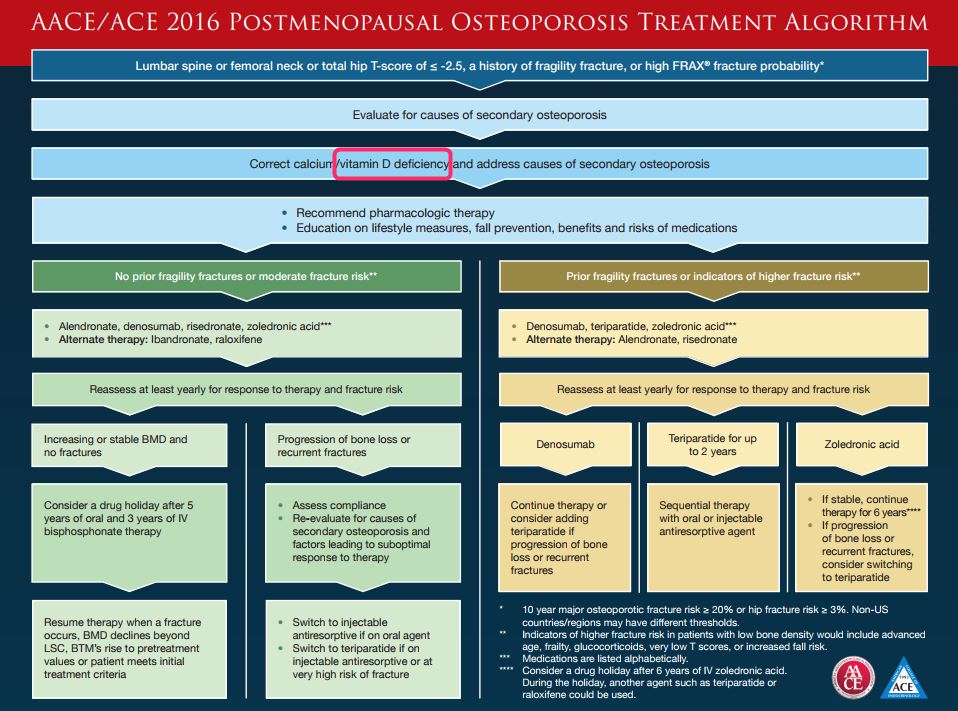Osteoporosis treatment guidelines by US Endocrinology groups
AMERICAN ASSOCIATION OF CLINICAL ENDOCRINOLOGISTS AND AMERICAN COLLEGE OF ENDOCRINOLOGY CLINICAL PRACTICE GUIDELINES FOR THE DIAGNOSIS AND TREATMENT OF POSTMENOPAUSAL OSTEOPOROSIS — 2016--EXECUTIVE SUMMARY
Endocrine Practice: September 2016, Vol. 22, No. 9, pp. 1111-1118.
doi: http://dx.doi.org/10.4158/EP161435.ESGL
📄 Download the PDF from VitaminDWiki
Pauline M. Camacho, MD, FACE1; Steven M. Petak, MD, MACE, FACP, FCLM, JD2; Neil Binkley, MD3; Bart L. Clarke, MD, FACP, FACE4; Steven T. Harris, MD, FACP5; Daniel L. Hurley, MD, FACE6; Michael Kleerekoper, MBBS, MACE7; E. Michael Lewiecki, MD, FACP, FACE8; Paul D. Miller, MD9; Harmeet S. Narula, MD, FACP, FACE10; Rachel Pessah-Pollack, MD, FACE11; Vin Tangpricha, MD, PhD, FACE12; Sunil J. Wimalawansa, MD, PhD, MBA, FCCP, FACP, FRCP, DSc, FACE13; Nelson B. Watts, MD, FACP, MACE14

Questions discussed
• Q1. How is fracture risk assessed and osteoporosis diagnosed?
• Q2. When osteoporosis is diagnosed, what is an appropriate evaluation?
• Q3. What are the fundamental measures for bone health?
• Q4. Who needs pharmacologic therapy?
• Q5. What medication should be used to treat osteoporosis?
• Q6. How is treatment monitored?
• Q7. What is successful treatment of osteoporosis?
• Q8. How long should patients be treated?
• Q9. Is combination therapy better than treatment with a single agent?
• Q10. Should sequential use of therapeutic agents be considered?
• Q11. Should vertebral augmentation be considered for compression fractures?
• Q12. When should referral to a clinical endocrinologist or osteoporosis specialist be considered?
